Caveat: this review was produced with a final production beta camera and lenses; this means that whilst we’re probably 99% of the way there, there will almost certainly be some small changes before the camera finally ships. All sample images were shot in DNG and converted via ACR, with the 18-56 and 23mm native T-mount lenses.
Let me say up front that whilst I have been very clear that innovation has been somewhat lacking in the camera industry across the board of late, there have been a few standouts that do so precisely because they push various aspects of the game – be it image quality or more rarely, ergonomics. I’ve long had the feeling that Apple’s latest camera implementations – touch once to lock exposure and focus, again to shoot – have really distilled the essence of the camera down to its bare minimum. It uses technology not to pad out a spec sheet, but to free the photographer to concentrate solely on composition. Shame then, that none of the more capable cameras have really gotten this implementation right – until now. I believe the Leica T is the first generation of a paradigm shift in the way we control and interact with our cameras.
About a month ago, I got a call from the folks at Leica asking if I’d be interested in testing out a new camera – but not just a new camera, a whole new system. That left me doing some head scratching: the S system sits at the top of the pile, with M coming next, and the other various smaller ‘systems’ – I use inverted commas because none of these have interchangeable lenses; just a huge quantity of accessories. That does not qualify them as a complete system, in my book.
In essence, the T appears to share the core technology from the X2 and X Vario – same 16MP Sony-sourced APS-C sensor, without anti-aliasing filter; mid-sized mirrorless body without viewfinder (but optional 2.4-million dot EVF) and lenses that are either a moderate-aperture normal zoom or 35mm equivalent. Frame rate seems to be lower at ~3fps for 13 shots. The T is launched with both the 35/2 and ~28-80/3.5-5.6 equivalents. Unlike the X cameras, the lenses are of course interchangeable – in a new autofocus mount – and trade the high-sync leaf shutters for an in-body focal plane shutter.
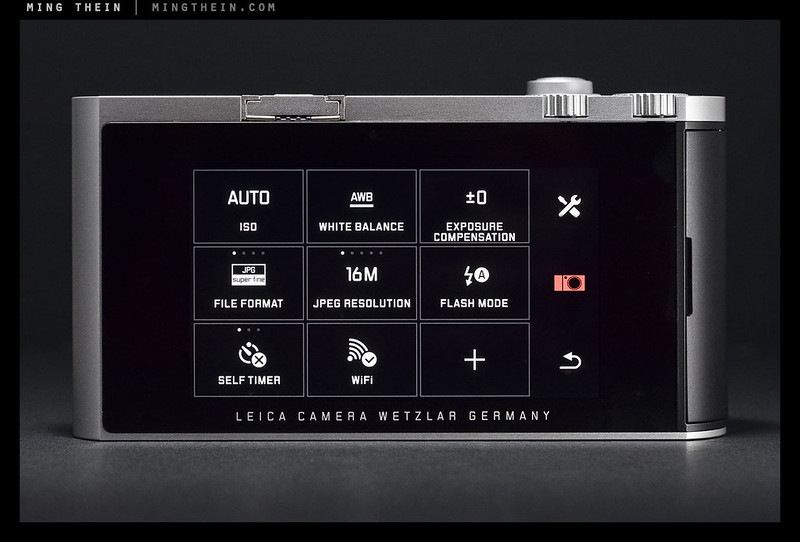
Apologies for more camera p*** than usual: this is an exceptionally handsome device, in a modern and unusual way.
The core then, is familiar ground. One could argue that the sensor is hardly state of the art anymore, but then again, the 24MP APS-C sensors currently available don’t appear to deliver much of acuity improvement, but penalize you heavily if your shot discipline is poor. The 16MP unit in the T is therefore a sensible choice – possibly the best currently available one – and one that delivers known excellent results. (The Ricoh GR is a good example of this.)
Where things seriously diverge is in the user experience. Even more so than the M bodies, I believe the haptics and ‘objectness’ of the T takes things to another level. The body is a unibody machined from a single 1.6kg aluminium billet and designed in collaboration with Audi, and available in silver (immediately) or black (in July). It’s solid and hefty but not heavy. The only reason this construction method works is because the innards are put in through the enormous rear screen aperture – it’s about 4” in size, appears to be just slightly lower in resolution compared to an iPhone’s panel, is capacitative touch sensitive and covered in Gorilla Glass. It would appear that some design DNA was donated on a more permanent basis by Apple’s Jonathan Ive after that one-off M collaboration; if you took the red dot off the front and blindfolded me, I’d have sworn Apple had decided to enter the camera business – it’s even got 16GB of internal memory, rather reminiscent of the i-devices.
I think this is a good thing. It means that firstly you want to pick it up and fondle it; wanting to use it means taking more images which in turn means better photographs – eventually. It is one of the most solidly built, if not the most solidly built, cameras I have ever held. It should be, since no others are made from a single piece of metal – there are no external shell or panel seams anywhere; it feels like it’s built to last. The only tangibly plastic bit on the whole camera is the SD card/ USB port door – shame this isn’t metal too, but I suspect it probably has something to do with the wifi antenna.
I have to say I don’t like the strap lugs. Though the mechanism is clever, and the placement doesn’t interfere with your hands, the supplied rubber strap has very sharp metal on the end that goes between your fingers; that combined with the surprising weight of the strap can make it dig in. Please round the corners, Leica, or give us an option for regular attachments to use a strap of our choosing. It might appear in my reviews that I’m obsessed by strap lug placements, but to me, this is one of the most important things for prolonged use when holding the camera in-hand. Finally, all of the controls and detents need to be just a little bit stiffer – dials are too easy to turn, and the power switch goes past ‘on’ to ‘flash up’ a bit too easily.
However, the most impressive aspect of the camera by far is its UI: it’s responsive, and more importantly, uses the touch screen in sensible ways – making it fully customisable. You can drag and drop the icons for settings you want in a 3×3 grid; touch to change them – have as many or as few as you want, and put them wherever you want. I’ve put my most used three under the arc of my thumb (metering, focus mode, exposure compensation) and left the rest of the secondary functions under my left thumb. You can of course then save all of these to a user profile for later recall. There’s a full menu with everything, too. It’s fairly mature for a first generation product – no doubt there will be improvements in future generations, but it’s very usable now, and quite refreshing. One side benefit is that you can actually find the button you’re looking for in the dark. I have to say at times I feel as though I’m using a smartphone though, and there’s simply no way you’re going to use this camera with anything other than thin leather gloves because of the touch screen. There have been other touch screen cameras before – but to my knowledge none that allow this degree of customisation (the recently announced Lytro Illum remains to be seen; and as usual with that company, you have to use their software to view – with all of the usual ‘we own your images’ caveats.)
The downside is that you don’t have the haptic feedback of real buttons, but the upside is that you can configure the camera’s shortcuts absolutely any way you want. It can be as simple as possible for beginners, or fully-featured for more advanced users. Two physical control dials for exposure (or anything else) are on the top right corner of the top plate, under your thumb. The T lacks a proper thumb grip, sadly – it feels as though it’d benefit from a ThumbsUp, except you’ll then lose your ability to attach an EVF. Once configured, I find the camera extremely fluid indeed in use – and unlike other cameras with configurable buttons, it’s impossible to forget what they do.
There are some gotchas, though – and some of these may be firmware related (my camera was not running final firmware): the camera not remembering the secondary dial setting (and defaulting to ISO), for instance; slightly buggy playback mode (swipe downwards to enter – that’s the single non-intuitive function on the whole camera, actually) which moves your AF box if you’re in touch focus mode. Playback mode itself is fine, if a little slow to enter – tap twice to magnify, one of the dials skips between images magnified, the other controls zoom. It’d also be nice to not be able to set the shutter speed past the max flash sync of 1/160s in Manual mode – the camera will fire, but you’ll get a black frame. Finally – and perhaps most importantly – information is always overlaid over the frame in black bars; you can lose the information entirely, but then you also can’t see what exposure parameters have changed when you turn the dials. It’s a little frustrating; either deal with imprecise edges or guess-the-ISO. Finally, if you’re the kind of person who likes to decouple the shutter button and AF and/or AE – you’re out of luck. Half press does everything; there are no more physical buttons to assign, and holding the screen doesn’t work, so that’s not really surprising. It’s not a big deal anyway; I’d much rather have AF/AE/shoot on one button because it’s faster.
Leica have added yet another EVF (with eye sensor, built into the camera body itself) to their growing collection – this time with a proprietary connector that’s buried down the deep end of the hotshoe a la Sony; perhaps to prevent people from going with the Olympus option as on the M240 and X cameras. The new viewfinder resurrects the old ‘Visoflex’ designation (to see one in use, see this article). It has a 2.4m-dot panel, and reminds me largely of the A7’s finder – though dynamic range doesn’t seem to be quite as good as either the A7/A7R or the E-M1. The refresh rate could be faster, too, especially in low light. In good to moderate light, it’s excellent – even if it does add considerable height to the camera and not quite match it visually (black plastic instead of aluminium). I wish the locking detent – it flips up by 90 degrees for waist level shooting – and the diopter dial were tighter though; it’s too easy to knock both accidentally. It’d also be nice to have somewhere to store that lovely little square of machined aluminium that’s the hotshoe cover – given the immense amount of thought given to the rest of the design, it seems like a surprising oversight. It’d also be nice to have a display mode where when the EVF is attached, the rear panel stays permanently lit as shortcut buttons since you can’t change anything on screen.
The sensor is almost a known quantity – image quality appears to be similar to the X2 and X Vario. I’d put the high ISO limit somewhere between at 1600 and 3200, depending on how much noise you can accept or how much NR you’re willing to do afterwards – there is a 12500 setting, but this looks like a storm of jellybeans. In practice it feels about a half a stop to a stop slower than the GR (which shares the same sensor) in terms of shooting envelope. This means in the dark, you really need to be using the 23/2 – or be prepared to give up two stops on the zoom. There’s an auto-ISO function with sensible limits; about 1/1.5x focal length. Given you’re probably going to be holding the T at arms’ length, it makes sense. That said, I still saw camera shake – especially at the longer end of the zoom. I really hope their forthcoming telephoto zoom has a stabiliser, otherwise the EVF and/ or a tripod will be a must. Usable dynamic range in good light is 11-12 stops, again comparable to its sister cameras; I don’t want to form any firm conclusions on image quality yet as my unit is not running final firmware – no doubt there will be some tweaks to color profile, high ISO performance etc. prior to launch. I’ll revisit that later, but suffice to say expect the output to be at the level of the X cameras or slightly better. This is also one of the reasons for the large number of B&W images in this review – there’s no ACR profile for the camera yet; I’ve made my own but not had the time to properly refine it.
Pixel quality is of course lens-dependent; the zoom is sharp throughout the range and across the frame at all apertures, peaking at f5.6-8; however it seems to lack the microcontrast ‘bite’ of the prime, which performs surprisingly well even at minimum focus distance and maximum aperture. The prime does display some longitudinal chromatic aberration wide open*, which I didn’t see with the zoom. I’m told it works well with M lenses (but lacks offset micro lenses) but have not had the opportunity to try this. I have used some of my Nikon mount glass as an experiment, and so long as the lenses were solid on the D800E, they were also solid performers on the T. One surprise is that the lenses themselves are not made in Germany; they’re made in Japan – you cannot tell this from the zoom and focusing rings or mount/ shells, but the extending part of the zoom is plastic, as are the hoods. (The body is made in Germany, though.) Autofocus is quite fast; not blindingly fast like the Olympuses and later Panasonics; a definite notch up over the X2 and X Vario. I’d say it’s just a hair slower than the GR with the prime attached. And there is a very short but noticeable freeze before locking focus, like the Fujis. Unsurprisingly, the prime is a bit faster to focus than the zoom – it is getting more light into it after all. What would have been nice is if the lens focusing rings adopted the same design as the X Vario – there’s an detented A(utofocus) position at one end, and a distance scale if you wish to manually override; it’d also simplify two more menu items (AF/MF and MF magnification – no peaking here). Hyperfocal heaven!
*Curiously, I saw this with the Otus too when mounted and shot wide open – I’ve not seen this behaviour on the D800E, which has the same pixel pitch. It might well be down to adaptor planarity, though resolving power doesn’t seem to be at all affected.
It’s interesting to note that the mount on the T is enormous – about the size of an EOS mount – which suggests the body could certainly take a full frame sensor. Presumably the size has something to do with tele centricity of the lenses, backward compatibility and so on. For those who do have M lenses, there will be an electronic M adaptor available too – it has the photodiodes required to read the 6-bit codes on the lens, and transmit those via electronic contacts to the T’s mount. I would assume there are some software corrections going on internally to compensate for vignetting, CA, magenta/cyan shifts etc.
Battery life is rather impressive. The cell itself is physically quite large – nearly the size of a D800E’s battery – but has half the capacity; the camera will still easily go for 600-700+ shots per charge, which is impressive given the size of the display it’s always powering. It’s also worth mentioning the battery mechanism itself is rather neat – a little lever makes a featureless rectangle drop out of the bottom a few millimetres; push it again and the battery releases itself. Similar to the S2, actually.
I think Leica must firstly be given credit where credit is due: to shoot with this camera is a completely new experience. It requires you to recalibrate the way you think of interacting with a camera to get the most out of it; there may be some discontinuity experienced when switching between the T and more conventional cameras. Iphone users, on the other hand, will be right at home. And it pains me to say this, but the camera now also includes wifi and a matching smartphone app for both control and social media sharing – it appears this is now a necessity for cameras.
It is not perfect; no camera is. I think whilst build-feel and materials are absolutely top notch, the ergonomics could still be better; there are a few awkward angles and sharp edges – especially around the strap. The proprietary strap attachments might be clean and neat, but they do severely limit strap choices – what if you want a padded neck strap, for instance? And a rear thumb hook is really a must to stop the camera from twisting out of your hands – they even added one to the M240. The next generation needs proper IS – ideally in the body, or failing that, in the lenses (especially since it’s a lot sleeker to use without the EVF) and a sensor cleaner.
This camera had – has – two big hurdles to overcome: a lack of native lenses, and fluidity/ workability of the UI. Spending some time with it has convinced me that the latter is mostly a non-issue; Leica are reasonably good about filling in lens holes, but I just hope that given the target audience, we get some fast primes, too – not just slow-aperture zooms (the brochure shows wide and telephoto zooms in the roadmap too); no matter how good the optics may be. Sometimes you just need more light. In the meantime, the ability to use M lenses may be a good solution if you already have some from your M bodies.
Which leads us to the question of who this camera is really targeted at: I think it’s too expensive for the casual enthusiast, and the price puts it out of reach of most of the lifestyle crowd; I can certainly see Apple fans buying it because it’s a product in the same gestalt (and much like a first generation Apple product, the idea is very solid but will improve significantly with a couple more iterations). M owners might well pick up one if the M240 is too rich for their blood, or they need a better telephoto solution – that 1.5x crop factor does give you a little effective boost. In fact, I can see a lot of people who have trouble focusing their Ms going over to the T for the AF alone – if the AF lens lineup is there to match. I can’t help but feel it’s made the X-lineup somewhat redundant: you can buy the T with a 35/2 equivalent, instead of the X2’s 35/2.8; and or you can buy it with the 18-56 zoom and gain a bit of maximum aperture on the Vario. What it lacks over the X cameras is the ability to set everything before turning the camera on – especially on the Vario, where you can set focus distance, too.
The final question is one of where the T fits in with the rest of the ecosystem and mirrorless pecking order. It’s not a speed demon (albeit somewhat crippled by shutter shock) like the E-M1; it’s not a resolution champ like the A7R (also crippled by shutter shock). It’s middle of the pack for responsiveness; comparable to a GM1 and kit lens, I’d say – but with better optics and a better sensor (comparable to the Ricoh GR). It’s priced well above any of these options – what did you expect, it wears a red dot – but it’s also built a cut above them, too. I suppose it’s like buying a German car: you might pay a bit more, and the spec sheet isn’t quite as full as a Japanese one, but it does just feel that little bit more enjoyable to use. Also as with cars, there’s absolutely no justification whatsoever for buying this over the competition. But the problem is, once you’ve handled it, chances are you’ll just want one – and that’s not something I can say for the vast majority of cameras I’ve handled. Haptics and build-feel do make a difference!
Overall, it’s a solid performer in every way – but the UI and build quality really set it apart, and make it a more interesting experience to shoot with than a lot of competing mirroless cameras. It’s a shame then that the price will probably be the limiting factor in adoption, even for people who want it. But who knows: it’s been a good 60+ years since the first Ms, but they may well have started another major shift in the way we interact with photography. Now, what I’d really like to see is a Monochrom version of this camera…MT
Jonathan Slack and Sean Reid have also published their respective takes on the camera.
The Leica T is available to preorder here from B&H.
____________
Visit the Teaching Store to up your photographic game – including workshop and Photoshop Workflow videos and the customized Email School of Photography; or go mobile with the Photography Compendium for iPad. You can also get your gear from B&H and Amazon. Prices are the same as normal, however a small portion of your purchase value is referred back to me. Thanks!
Don’t forget to like us on Facebook and join the reader Flickr group!
Images and content copyright Ming Thein | mingthein.com 2012 onwards. All rights reserved


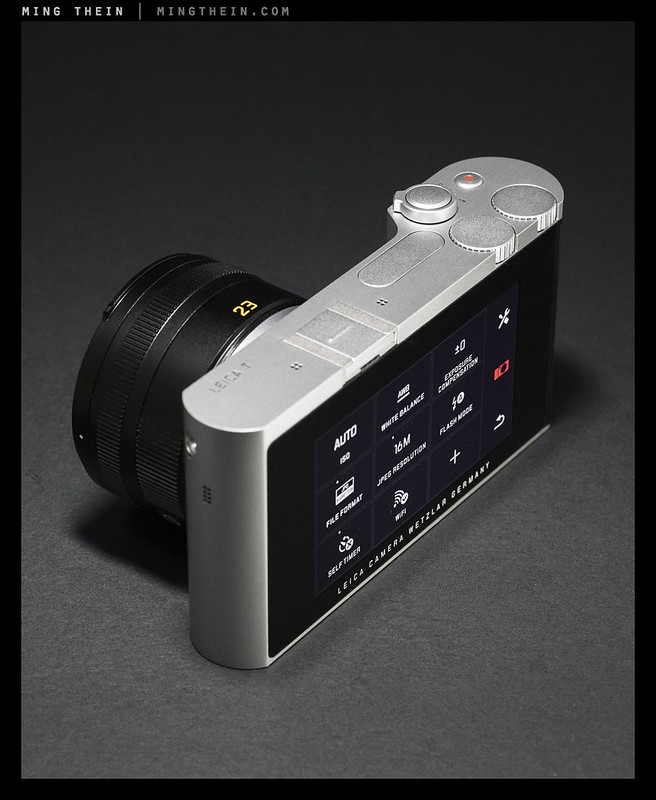

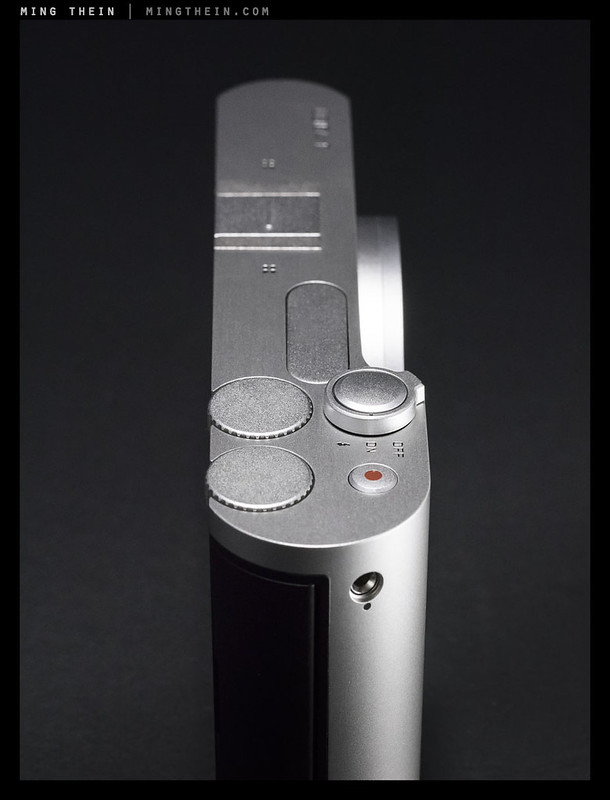
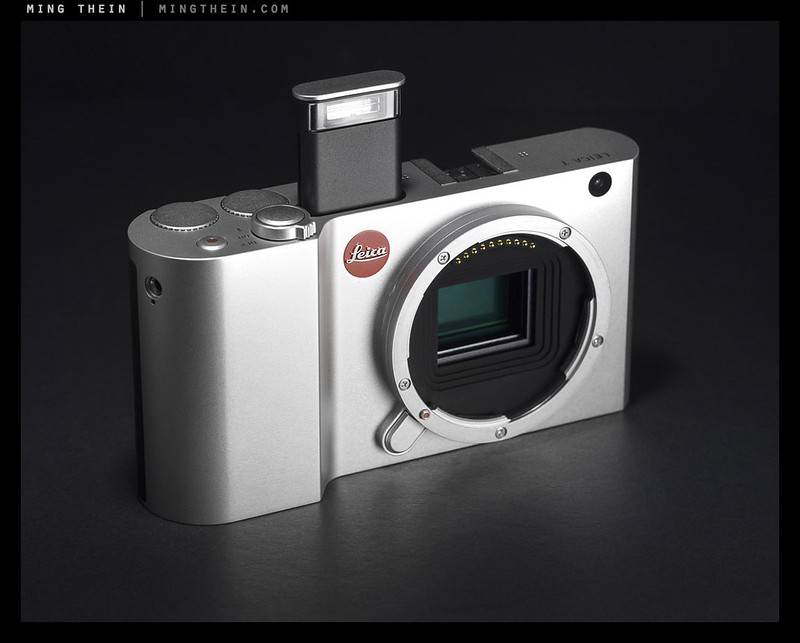
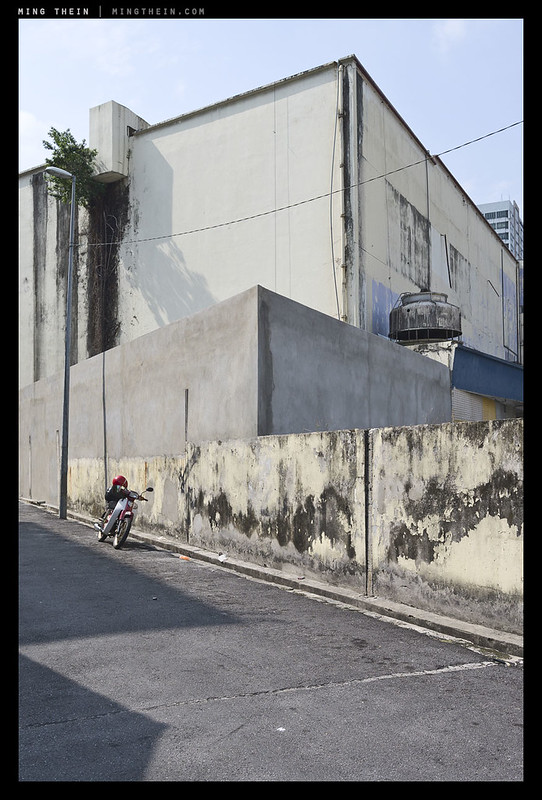
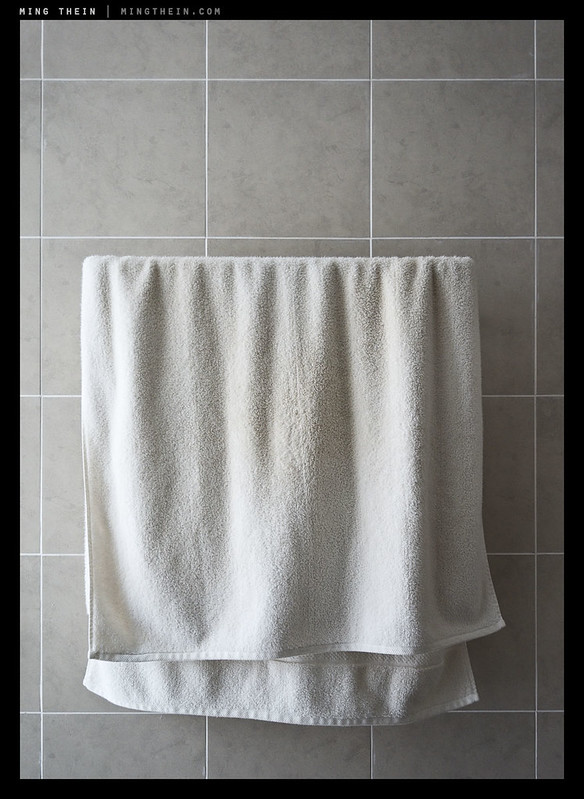
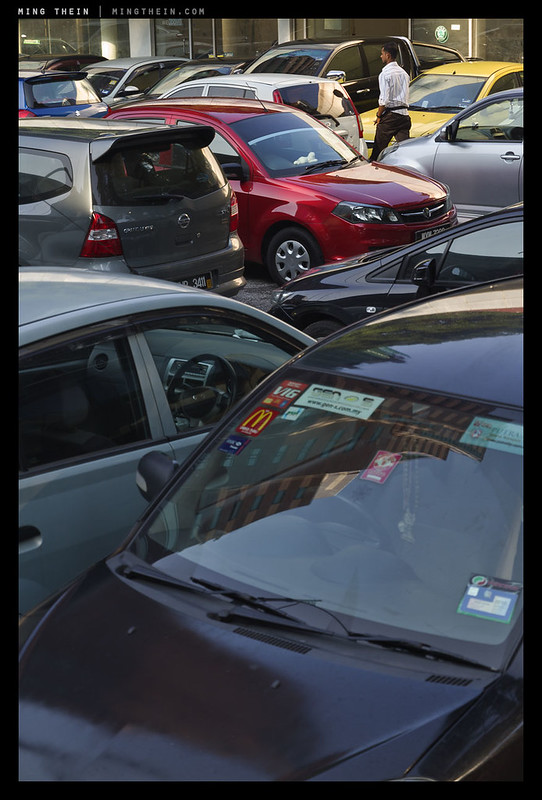
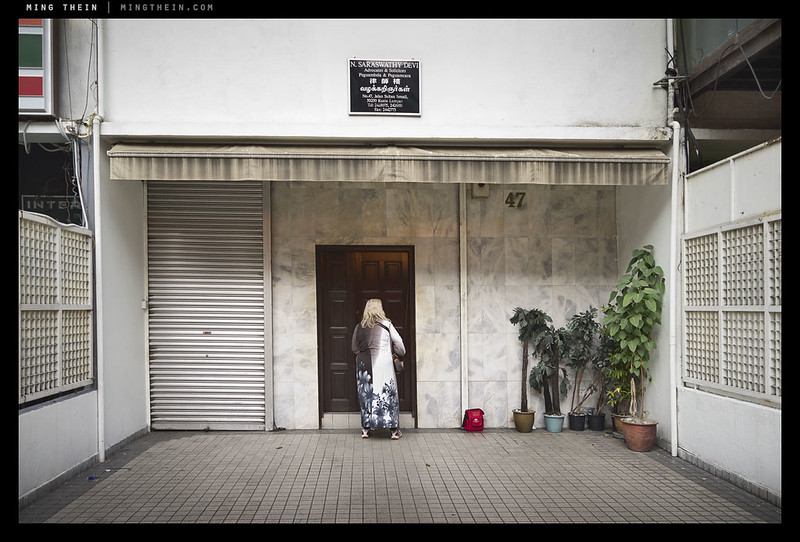
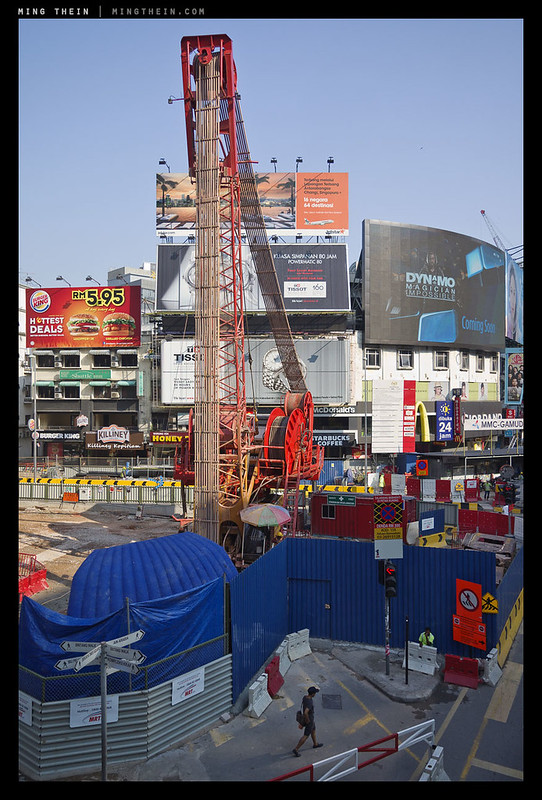
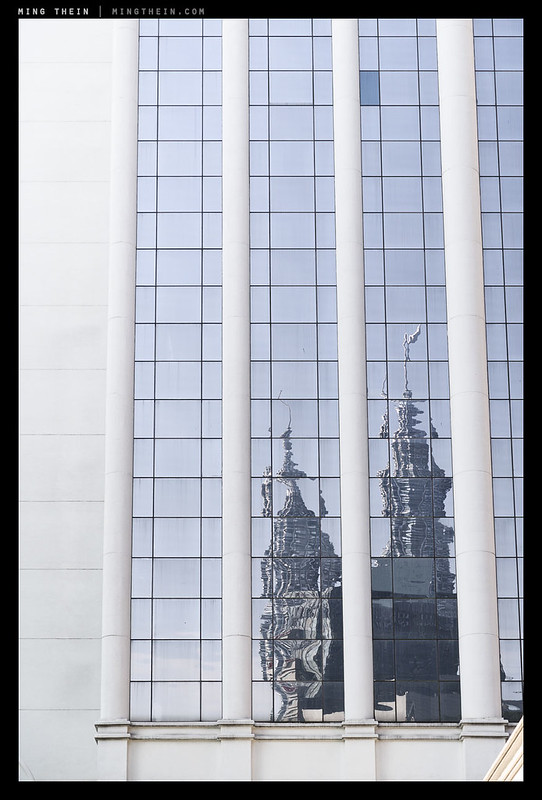
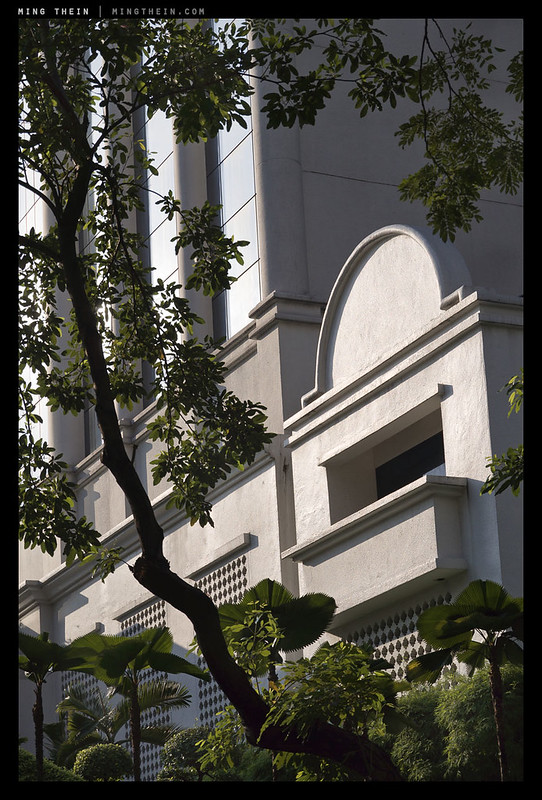


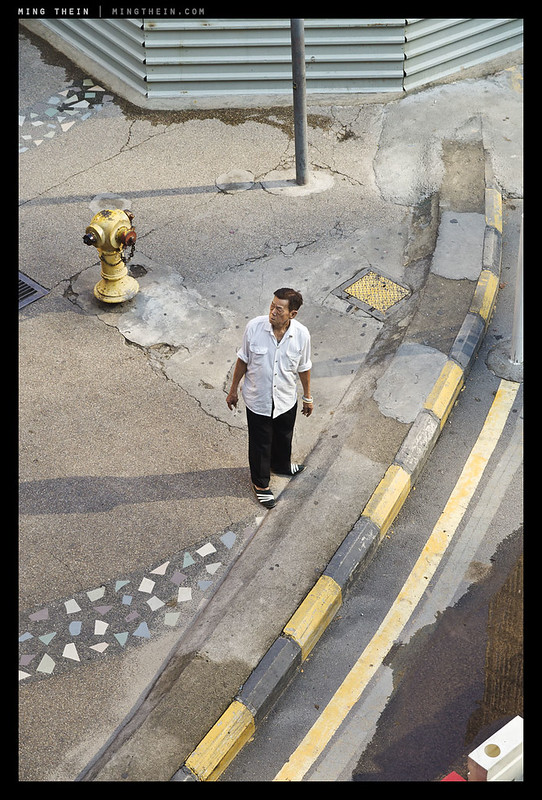
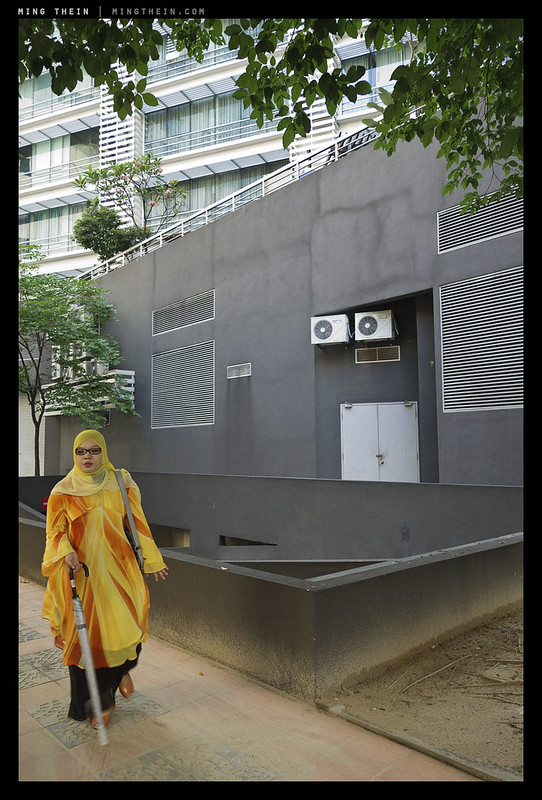
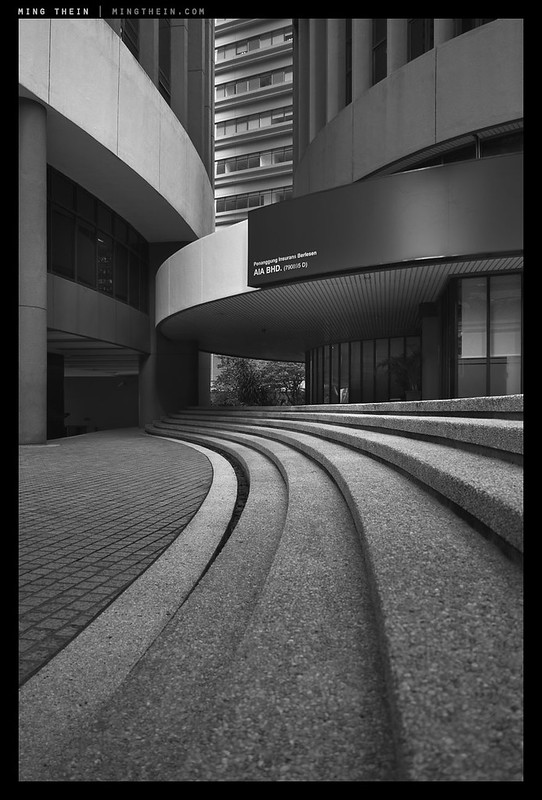






I have the T now for about 7 months, and I still read your review once in awhile, very helpful review, and fantastic beautiful pictures. I am happy with the T. It became a “real” camera with the Firmware 1.4: fast and responsive. Two things are ever irritating: the strap: heavy and curlying always; and the the battery charger: practical design but it charges much much too slow (I never had a camera with a good fast charger).
Thanks – the next FW update should make it better still from what I understand. Chargers: Leicas have never been fast. The Nikons are pretty good in my experience – especially the pro series chargers with the single digit bodies; they’re really fast.
More than one year later…I’m not an early adopter 🙂
You are correct , when you have one in your hands you realize that you want one! I’m an m7 user (and Leica X1 which I use beside the m7 when I need different iso) tried one today and now really planning to buy one…with it’s 23/2 and one of my M’s 50 I would cover most of my needs…
robert
PS: thanks for the review
Hi Ming,
you’ve stated here that the Leica T has no antialiasing filter, but all X-Series does have. Can you please confirm this ? Have you perceived if the Leica T files are sharper than the XVario or X2 ones ?
As for its lightweight and size, I’m thinking that the combination of a Leica T body + M adapter + Macro Elmar lens to shoot B&W negatives over a Lightbox on a Repro stand could be an interesting option. What do you think?
I know that you actually do that with your Nikon D800. I’m doing myself with a Leica M9-P body attached to a Visoflex-III and an FD 50 mm Canon Macro lens via an adapter.
I also use a Minolta MultiPro equipped with a Scanhancer that in my opinion is essential to get fine results from B&W films. In comparison with the Leica M9-P system, and scanning raw, results are quite similar with a little advantage by the edge to the Leica system. Of course, scanning with the MultiPro is also slower…
I’ll appreciate very much your opinion about this. Thanks,
Juanjo
I can only repeat what I’ve been told by Leica. Hard to tell if the T files are any sharper because the lenses aren’t the same; it’s impossible to compare like for like.
No reason why copying negatives with the T wouldn’t work, but if they’re medium format the resolution would be less than the film actually resolves. You’d be fine for 35mm though.
I agree with you about comparing different systems in different conditions. Anyway I can see a clear difference when I open in Lightroom an M8 or M9 OOC raw file with another from a Canon DSLR for instance, because of the AA filter. That’s what I’d like to know. If you have perceived such a subtle difference.
As for the resolution, I agree too. I’d rather prefer an CFV back with a Makro Planar 120 mm !
By the way, I’ve been working a whole year with Hasselblad in the development of a CFV-NIR solution for photographers and Institutions working in the reproduction of Paintings. But due to actual economical situation, changes in providers and too at the head of the Brand and Special Applications department, the project is unfortunately stopped.
Thanks again Ming. I much appreciate your labor and dedication to Photography.
It’s nowhere near that different; definitely closer to the Ms than the Canons or any other camera with AA filter. The 50MP CMOS is the sensor to get…
new firmware FIRMWARE LEICA T VERSION 1.2 brought a big improvment in speed… wifi still unstable……
Reblogged this on Eileen Lyn Wah.
Nice Leica T Blog from Finland.
http://leica-t.com/
Nice review , thanks
Pics not up to your usual standard 😉 would have liked some faces and more people generally
The question is, do he images pop for you ?
Hah! Half the time people complain the images are unrealistic and unrepresentative. The other half of the time they complain they’re not good enough. I didn’t have any more time to shoot and certainly didn’t want to be out in the haze for longer than I had to.
Do the images pop? No, but then again with 100+ API haze floating around, light isn’t exactly crisp, either.
Dear Ming,
I thoroughly enjoy admiring your superb photography. A novice question from someone(!) who covets a Leica T–hope you don’t mind… Would a combination of the the T23mm lens, the EVF along with taking some much needed lessons(!) negate the lack of image stabilisation. My humble understanding is that camera shake etc would be more visible when using a telephoto lens for example.
No, it won’t. Stabilizers are stabilizers…
Hey Ming Thein, in one of your articles you mentioned that Leica cameras don’t seem to interact well with Sandisk memory cards. Unfortunately you didn’t suggest more “compatible” alternatives. I would kindly appreciate your recommendations on memory cards that work well with Leica M or T models.
Thank you very much for your always very insightful articles!
Transcend, but they’re slow.
Thank you for your recommendation!
Hello Ming,
I’d like to quote the following:
“(…) if you’re the kind of person who likes to decouple the shutter button and AF and/or AE – you’re out of luck. Half press does everything; there are no more physical buttons to assign, and holding the screen doesn’t work, so that’s not really surprising. It’s not a big deal anyway; I’d much rather have AF/AE/shoot on one button because it’s faster.”
I’m seriously puzzled by this comment.
How do you tell the camera to expose to the darker background but focus on the brighter object in the foreground?
As far as I know, you can’t. And that can make one lose his temper.
At least I certainly did when using a cheap P&S that wouldn’t lock the exposure elsewhere from the focus point; such experience was maddening. And I think even trying to bypass such limitation by playing with the exposure compensation would be frustrating.
Thus I’d be interested to know how you practically dealt with this during your time with the camera.
As a side note, the lack of aperture ring on the lenses is also a shame, but this point has already been addressed by other commenters.
Cheers
I don’t actually find this to be a problem because it’s how I shoot all of my other cameras – you want your subject to be properly exposed and focused, so the spot meter and spot AF takes care of this. If you need a slightly different exposure you can usually move the spot a bit to change exposure but still focus on the right point.
A Monochrom version – now here I agree with you! Otherwise, the T just seems like an elegant design exercise, with a beautiful aluminum body that encases electronic components that will be severely outdated in 4 or 6 years. And small-aperture zoom lenses that are expensive – it just does not make business sense to me. The M cameras and lenses are unique, but the T confuses. But regardless, I hope Leica succeeds and shows me to be wrong.
It might not make sense to a lot of us, but there are plenty who will buy it because of the red dot…
Any full resolution (= relevant) samples? Don’t feel like doing a hundred clicks between here and flickr to find a relevant sample. But thank you for the review and the words. Would be nice, if you added some full res samples or make it more clear where they are.
No. I never post full resolution due to people being unable to respect image rights.
Ming, thanks for your insights. Just one little gripe (jokingly) — your shooting skills would make pictures from even my daughter’s Barbie 110 film cameras look like they were shot with a Hasselblad. Excellent article and images as always — I think Leica has again created a very desirable camera here.
That will be the subject of the next review…
I vote for Ming to participate in DigitalRev’s “cheap camera pro photographer” series! I think they already featured a Barbie camera as well over there! 😛
Why?
I think the series is very insightful in showing how experts creatively work around camera shortcomings. Even if you know that the camera is less important than is often believed, seeing this demonstrated in such an extreme way is quite impressive. And it’s also entertaining, very entertaining! 🙂
Thanks!
Dear Ming, thanks for the fine review… as I am one of the few xvario use – and I like it! – I have one major question: The main lack of the xvario is speed! If you take a picture you will not see live view again until the data is written to the memory card. In mode DNG this takes quite I while…. is this the same with the T ? This is a real no go!
No, the T is much faster – at least mine is, but again I’m not running final firmware. The HUGE strength of the XV to me was the ability to set everything including focus distance before powering the camera on, so the response is instant and known.
Can you preset the T in the same manner? Setting the focus distance in advance is important to me. Love you thoughts. Excellent information here. Ming, you are a great blend of the art and science of photography. Cheers.
I’m honestly not sure as there’ve been several FW revisions and a new hardware revision since I last used the camera (which was a review loaner)…sorry!
I might get this in 2016 when a used kit with the 23 might be around $1800 or so. I rather like the user interface and after struggling with niblet-sized buttons and stupid UIs on all of the other compacts, this customizable touch screen makes a lot of sense.
The problem is that there will be photo opportunities from now till 2016 and you will shoot with whatever camera you have. 🙂 I am making a point that *if* you like a camera then delaying purchase doesn’t help much. Of course there are excellent cameras other than T.
Very true!
Seems like yet another very nice camera.
And there’s the rub. There are already lots of really nice cameras.
Designed to look different is not “innovation.” Using a new model camera is always a whole new paradigm, a whole new experience.
From a design perspective, this model seems oddly derivative of the original Nikon V1. Starkly minimal, with a minimum of buttons and controls- for which the Nikon was widely derided. A sort of industrial slab reminiscent of Soviet design cues at their finest. When Leica does something similar 3 years later it is somehow Apple-like.
But the V1 had a built in viewfinder, and the Leica does not. I’m surprised at that, knowing the Leica fan base for the last 40 years. The camera is German but the lenses are farmed out Asian, yet priced teutonically.
I’m glad Leica came out with it. Beyond the manufacturing technique, and very high price, I’m not sure what it adds to what is already available. I may have missed it from the review, but I’m not sure exactly what is unique and unprecedented.
The Nikon – and unusually for Nikon – had very little customisability of controls, which isn’t the case with the Leica. I’d rather cameras go all-mechanical controls or none at all – half and half is just confusing. The manufacturing isn’t what’s new, it’s that style of UI being applied to a camera with more imaging potential than a smartphone.
“From a design perspective, this model seems oddly derivative of the original Nikon V1. Starkly minimal, with a minimum of buttons and controls- for which the Nikon was widely derided. A sort of industrial slab reminiscent of Soviet design cues at their finest. When Leica does something similar 3 years later it is somehow Apple-like.”
The Leica T has a minimum of physical buttons, but plenty of controls – they’re simply on the touchscreen. The Nikon V1 had a minimum of buttons and no touchscreen. That’s a fundamental difference!
Yeah well I like Apple products too (and own them) and yes they cost more than the competition but not a ridiculous amount more as does this Leica. For $4000 (with a lens) you really have to like that solid chunk of aluminum. My idea of Leica elegance and craftsmanship continues to be an M3. I know I’ll be panned for this but for that money I’d take a Df with a Zeiss lens instead.
I think the Zeiss definitely feels better than the T lenses, but the Df body…not even close, sorry. They’re completely opposite control paradigms, and I suspect if you like one the other may not be so intuitive.
I agree that the UI of this Leica looks refreshingly simple and straightforward. But yes I do like dials. 🙂
“I think it’s too expensive for the casual enthusiast, and the price puts it out of reach of most of the lifestyle crowd; I can certainly see Apple fans buying it because it’s a product in the same gestalt.”
I think that’s exactly why I’m so in love with this camera: I am a photography enthusiast, I like lifestyle gadgets, and I am a passionate Apple user. My first system camera was a NEX; I switched to an OMD because Sony’s UI was chaotic and patronizing. The OMD offers endless options – but no way of selecting which options you really need. A thousand options or none. Both NEX and OMD also offer touchscreens that have clearly been afterthoughts with poor integration and user experience. The Leica T fascinates me not just because of its high Apple-like build quality, but primarily because of its controls: Two control dials for mechanical control of the most important parameters, a huge touchscreen and a touch-optimized interface – perfect! The small buttons on my OMD actually disgust me, the T seems really liberating in that regard. That love for the details, it’s rare.
However, even the video mode on my OMD is pretty poor and I wouldn’t want to downgrade further. The external EVF and the non-tiltable screen are annoying, but I could live with them – but no IS whatsoever is a non-starter for me. The slow zoom lens becomes even less usable in low light when there is no IS compensating for three stops easily. And why in the world is there no focus peaking!?
For me the T is the camera of the year because of its innovative design and because of what it represents: forward-thinking rather than stupendous checklist-engineering. However, while Apple is known for fixing first-generation shortcomings and actually often turning them into advantages in following iterations, I am not sure Leica will do the same. If this camera was made by Apple, the second generation would incorporate any form of IS, a tiltable screen, a great video mode with manual controls – and would be noticably cheaper as well (particularly the lens prices seem steep). But from Leica I expect … maybe a colored Limited Edition. I hope I’m wrong though, and just in case I’m starting to save up for the second generation right now.
The E-M1 is a lot better than the E-M5; touch screen works (but again, is a bit of an afterthought – I never use it) and video bitrate is quite a bit higher than the E-M5. We’ve used them to film all of the Making Outstanding Images and How To See videos since Ep. 2.
On the T, the screen is not tiltable but the EVF is – I don’t know if that helps for you. Lack of IS I agree is a pain.
The idea that this Leica is a forward thinking camera is most humorous. Replace the precious red dot with a Samsung or Sony name, keep the price and everything else and this camera gets laughed out of the room in record time. It is a joke of a camera, overpriced for those with lots of money, but zero brains.
The audacity to make a commercial like this almost (almost!) makes me want to buy one: https://www.youtube.com/watch?v=PpSMW5H7FPQ They call it the most boring ad ever. There’s an intro for the first 2 minutes, and the other 42 minutes is just a guy polishing the frame in silence. Maybe Leica sells a sticker or tote bag I can get instead …
How about replacement pins for the strap lug hole covers? 😛
That sounds expensive. 🙂 I think I’ve seen replacement Nikon triangle split rings go for insane prices on eBay, too.
A little secret: the Japanese ‘Cura’ rings are much better, and about $2 a pair. Bellamy Hunt says the creator spent years finding steel with the right springiness, then figuring out how to polish them so they’re easy to go in and out, won’t scratch the ears or take off your fingernails. And boy, they are definitely well made…
Ah, I knew there had to be something else out there. Thanks! I’ve temporarily transplanted the E-M1’s rings onto a used F4S I picked up recently.
Funny to see that the Leica T with the 18-56 mm (27-84 mm in 35 mm eq.) is hailed but the Leica X Vario with the 18-46 mm (28-70 mm in 35 mm eq.) is not appreciated.
Both cameras have the same sensor and almost the same lens.
You obviously didn’t read my review, then.
The photo samples here don’t do this camera any favours, though.
You’re looking at compressed and flickr-butchered JPEGs.
I completely disagree with your statement about innovation being lacking in the camera industry. Sony just unveiled a FF mirrorless camera that can capture low noise images at iso 25600 (and up to iso 400000). The Zeiss Otus sets the new standard for all lenses ever made in wide-open sharpness, and the Sigma 50 Art isn’t close behind for under $1000. High res bright OLED EVFs are almost as usable as the OVFs they’re replacing – with a higher resolution than my first 15 inch laptop screen. And almost all cameras can now wirelessly transmit images via wifi and geotag images with GPS information. Fast flash memory can now store thousands of images on tiny 128GB cards that are very affordable. Every person who owns a smartphone has a camera in their pocket. Images can be uploaded to the internet and shared with the world in seconds. Compare all this with the state of photographic technology 15 years ago when most people were still using film.
Yes and no: notice how all of your examples are ‘do it better’ – but are still more of the same. The Sony does 400k with a caveat: low resolution. The Otus is expensive, it wasn’t designed to a cost; and EVFs aren’t new technology. Though they are all better than their predecessors, none of them fundamentally change the way we interact with the devices in the way the iPhone’s camera did (and the T finally brings to something with a bit more horsepower).
I would assert that all technology is a slow march of “do it better”. The iphone isn’t a revolutionary capture device so much as it is an ultra-portable high res point and shoot that everyone has on them at all times. It still doesn’t change the way most people on the street take pictures: point and shoot. Hence the “selfie”; Pictures of one’s breakfast shared on facebook is hardly a revolutionary form of photographic expression. To suggest that the T fundamentally changes the way we interact with devices is a bit of a whitewash. Touchscreens exist in a plethora of mirrorless cameras and work identically. The T is just the first such device with an unreasonably high cost designed for the boutique troupe.
Which of the touchscreen mirrorless cameras let you customize a menu with that degree of simplicity/ control? None. I don’t disagree it’s expensive, but then again apple products are also expensive and arguably have superior design compared to the competition. I don’t fundamentally change the way I interact with or shoot with the other cameras. I do with the iPhone and the T. I’d suggest you actually try using one seriously before coming to a dismissive judgement.
It’s a strange beast, like most Leicas. It has a highly innovative rear display (well, innovative for a camera) and the monocoque body is interesting (though offers no real world benefit outside of bragging rights).
It’s the guts of the thing vs. price where one really gets let down compared to the competition. For example, usability is somewhat crippled: a sensor with modest high ISO performance + slow lenses + a lack of any form of image stabilization = poor low light capability.
I wonder who actually builds the lenses in Japan. We now know it’s not Panasonic, which in itself is interesting.
I don’t think there are any better APSC sensor choices at the moment; the 24MP ones are just a bit flat and lacking in acuity. But I do agree that a lack of any sort of IS does cripple things.
Is the screen big enough? 3,7″ seems a bit small in the product shots. There’s a lot of black on the back.
I thought so too at the start – but it’s big enough. Any bigger and you have nowhere to put your hands when you hold the camera.
Hi Ming I agree with all the positive comments on the results here…fabulous photos. But what are the jpegs like straight out of the camera, it would be interesting to know how a lot of these cameras perform without post edits. Are the makers getting closer to producing a JPEG that doesn’t need a lot of work. I imagine most of your readers are serious about photography so probably shoot raws and I know it’s not possible in many lighting situations to expect a camera to produce brilliant results so maybe I’m missing the point but if the Leica made the images above straight out of the camera I would be truly impressed.
It wouldn’t be fair to comment on image quality at the moment because the firmware is still beta; between the time I received it til now, there have been three revisions and each one has improved image quality incrementally – color, acuity etc. We’ll just have to wait for the final shipping FW to make a call.
i want that cameraaaaaaa….love it….
http://jasminephotowork.wordpress.com
Good review Ming, as usual… Beautiful product design (and UI seemingly, for a 1st gen) and kudos to Leica for being the ones to “evolve” the game for the consumer audience (with some disposable income :). Personally, I’d like to see direct mechanical access to controls (exposure at least). Also, if Leica were to implement some easily set functionality ala GR (snap / hyper focal) I could be tempted however the GR is def more inconspicuous for street and that 28 / sensor combo is special. Anyway, totally agree with your very last comment, if they make a Monochrom version of this……. 🙂
I actually wish they’d at least gone with some of the fixed controls from the X – AF-distance scale, and shutter speed; those two at least are lens-independent. Better yet, an aperture ring on the lens itself…
Well, body design not bad ( altrough Ive seen better ones on the beach clad in bikini) . The 23mm a bit blocky comparing to the body, should look more like Elmari 28&2.8 asph.. As to future 18mm *28eq Leica could get a batch of Ricoh GR lenses
Anyway when photographing with Leica T, you must wear Rado Ceramica X Jubile, otherwise you+ll be out of finer circles.
GR lenses would not be a bad thing at all. Best wide for APSC, in my book…
Ming,
Very nice and usefull write up. I use the 21/3.4, 35/1.4, 50/2. How easy is it to focus M lenses in low light? Is the EVF needed?
I love the looks and the ergonomics. I cannot wait to see what the new M will be like?
Can’t answer that as I don’t have any M lenses currently, sorry.
I’m always interested to read your reviews as you are so thorough and analytical – but I get a limited benefit from the images, especially at web size and even clicking through. “Oh look, the images from this new camera are excellent”. Well, maybe – but actually it’s a case of “oh look, Ming’s pictures with this new camera are just like all his other fantastic pictures”.
Hmmm Ming,
good first hands-on review, superb images as always – but the one thing I don’t understand: you as well as the DPReview guys (haven’t read much else yet) say: “no stabilization”. Fine. Or rather, not so good (at least for this old coffee junkie who couldn’t afford that camera anyway, and who’s not sure he’d want one). The contradiction I mean is in the image shown at the EPhotoZine at http://www.ephotozine.com/articles/leica-t-701-system-hands-on-preview-24575/images/highres-Leica-T-Typ-701-Aluminium-26_1398341667.jpg – what sense does “Image Stabilization On” make if there isn’t any?
It’s electronic – a bit like the ‘motion blur unsharp mask’ that PS has. Honestly, it’s so useless I don’t know why they included it at all.
It’s nice to read a review of a Leica which doesn’t automatically go to the extremes (“it’s a Leica. I must stop thinking and praise it excessively” and “It’s a Leica. It’s a toy for rich people”) and really gives the camera a fair workout. Some really nice sample shots as well. Especially that last one – it’s like a textbook shot for leading lines!
I just have to mention “storm of jellybeans”. Love that turn of phrase, never heard it before!
” wanting to use it means taking more images which in turn means better photographs – eventually.”
Disagree with this completely. Quantity has never meant quality in any circumstance. I find that I achieve far greater results shooting film than digital, simply because I shoot less, and think more. A lot more. Machine gun photography, IMO, actually works against quality simply because one cannot put large amounts of thought into each image. How many people shoot digital and come home with 10 images? Very, very, VERY few. How many people buy 16 gig cards? A lot.
Regarding the camera, I wont spend $4 grand (almost) for a better user interface. Not even close.
The rest of the camera looks decidedly ho hum. Remove the precious red dot, keep the price the same, and replace it with a Samsung label and the camera gets rightfully excoriated.
Very nice product photography by the way. You really shine there.
Well, if you don’t shoot, you won’t get any images. If you don’t experiment, you won’t learn. So shooting more does result in better images – up to a point. Of course randomly spraying isn’t going to help.
Samsung wouldn’t make anything (and doesn’t) that has the same build-feel. Is it worth the $4k? I can’t answer that. For me…the lens selection doesn’t really fit my needs.
As for the product photography – well, I do that for a living 🙂
Interesting take.
Not sure it makes the X series redundant, they are cheaper and have their own unique points.
Many people said the A7 would make the RX1 redundant but it didn’t and the X-E1 make the X100 redundant but it didn’t either.
It’s certainly made them even *more* niche, though.
“It would appear that some design DNA was donated on a more permanent basis by Apple’s Jonathan Ive after that one-off M collaboration; if you took the red dot off the front and blindfolded me, I’d have sworn Apple had decided to enter the camera business..:”
Ming, you are not quite right: Jonathan Ive´s work is based on Dieter Rams work, a german designer, which, in turn, realized partly the german “bauhaus” design, a design school founded by Walter Gropius in Weimar. This, and the design from leica (Audi) based on the “bauhaus” language, the same ideas from Walter Gropius, Jonathan Ive based his work on and developed it into the information age. But this work has also been done by Dieter Rams, look at the devices from “Braun”, a german company, and you will see the same design language as in many of the Apple products or, now, this leica T-camera.
regards
That would make sense. Thanks for the explanation! Just goes to show how popularity can distort things…
Ming, these have got to be the finest set of images any camera manufacturer has ever had to go with the launch of a new camera, simply outstanding. The camera sadly has to come a close second.
Haha, thanks.
You need to check out Kristian Dowling’s review.
Kristian’s product shots are courtesy of Leica and their EXIF data is wiped clean ;-p Perhaps because they were made with a Canikon?
Who knows…
I….I want this. It’s beautiful.
Maybe if I sell my 600D. And my kidney.
Half a kidney, it’s not an M 🙂
Half a kidney for the body, the other half for lenses. 😉
Fair enough!
Very handsome camera and the UI looks exciting too. A big minus though for relying heavily on capacitive touch and an all-aluminum body; both are particularly bad in cold weather. However, the more universal issue is the one of price, particularly when combined with a new and proprietary mount. The camera is roughly (generously…) twice the price of the competition, but the lenses and EVF are in a league of their own, with the 23/2 apparently being close to $2000. That’s very steep by any standards.
Economy has never been a Leica hallmark…I think the body is difficult to judge on value because of the way it’s put together; the lenses I agree are very expensive for the spec, but the 18-56 is a surprising performer – even in the extreme corners.
Here in the cold climates we can buy gloves that are “touch screen compatible” so we can use our phones and Leica Ts in blizzards and such. Thanks for another excellent review Ming.
Aha – I’m not sure I would though, since it isn’t weather sealed…
Not weather sealing it seems like a great shame, as with this monocoque design one would have thought it so much simpler to seal than traditional bodies. With Olympus and Fuji offering sealed bodies, this seems like an opportunity lost. IMHO.
Agreed – there aren’t really a lot of openings to seal either, compared to the competition.
Between this and a used M9 or M-E, I think will be a question for some. How important is autofocus with the red dot? 😉
I do like the industrial design, but it looks slippery. When viewing the Kaufmann video I noticed he picked it up by the lens, which is a telling indication. All that aluminum, it shouldn’t be too tough to incorporate a gripping surface. Supposedly Walter de Silva, who was behind the M9 Titanium design, was involved in designing the Leica T. Maybe Leica will offer a grip at some point.
Not everybody can use an RF properly, and most can’t tell if it’s out of alignment – everybody seems to blame their eyesight. I suppose AF + slow lenses will yield better results for the majority.
Grippiness? Buy the additional sleeve accessory…I think it’s a shame, because it covers up that lovely industrial design. It isn’t as slippery as it looks, but it could use a thumb ridge at the back.
Sorry, this makes no sense at all. Do you see focus points in the viewfinder, sorry, Visoflex ? How does the almost total lack of physical controls work when you’re holding the thing up to your eye ? Somebody’s totally lost the plot here, as have a whole host of A-list photobloggers manipulated by Leica marketing into feeling exclusive. No stabilisation, no AF lock, no AE lock, no DOF preview, … not sure we’ll be needing your videos much if this dumbing down is the way the industry is going.
You see the same thing in the VF as on the screen. Take the camera from your eye and use the controls as you would normally to change things, otherwise there are physical dials for exposure.
I’m not manipulated by anybody into feeling exclusive – you, on the other hand, are just rude – it’s hard to when another 20 people are also writing about the camera. And I certainly don’t have the time to waste reviewing something that isn’t interesting to me. I’ve already complained about the lack of stabilisation, there IS AF/AE lock, and there’s no point in having DOF preview because the lenses are too slow anyway. Nobody complains about lack of DOF preview on an M, or the fact that your DSLR focusing screens don’t show much wider than f4 anyway.
Composition is independent of equipment. And I’ve never released any videos that are gear-based.
But how does it focus, do you see focus points, or squares? How do you move them around? None of the reviews have told us.
I have quite a few M-lenses and am interested in this camera, but I assume I would need the EVF – I can’t see how you could focus a lens manually while holding the camera at arm’s length.
You see squares for the fixed points, and you can poke the screen anywhere you like for touch AF – which raises another square. Focus locks after touching.
You’d definitely need an EVF with M lenses. I see it being a good tele companion to a FF M body because of the crop factor and EVF.
Without knowing the technical details of the camera, since it is a mirrorless, it is likely to focus using contrast detect – no need for phase-detect focus points. As a result there are no fixed focus points on the screen. Instead it will operate like a point-and-shoot. I am sure you could set focus behaviour to centre, multi (some ‘auto/intelligent’ algorithm) or spot (by poking the screen).
Interestingly I believe the T does not have focus peaking? If this is true, why on earth not? It aught to be a trivial feature to implement, given Leica has experience providing this technology on the M. If Leica are advocating M-lenses as a stop-gap measure for their (currently) incomplete lens line up, surely this would be a valuable feature? Fortunately this is something that can be added with firmware upgrades.
The problem, I see, with using M-lenses on the T is focus confirmation via magnification. Magnifying the centre may be trivial but I am not sure how you’d pan around the magnified image while using the eye piece? The reliance on the touch screen and lack of physical controls might make focus confirmation of off-centre compositions with M-lenses impossible using the eye piece. You might be forced to drag the magnified image around on the touch screen?
And to David (also Ming since you missed this point) unless i am mistaken, you ALWAYS have DOF ‘preview’ on a live feed. In fact this is one advantage of mirrorless cameras (and live view in general). The image circle is projected directly onto the sensor and piped into your screen/view finder electronically. Compared to other framing technologies, you really do get a preview of what your sensor will capture. I am an EVF convert and believe it has reached the “point of sufficiency” – sure i’d like better refresh rates, dynamic range and colour. On the other hand, for now I get 100% accurate coverage, magnification, live “DOF preview” and live histograms… Oh and least of all I can compose with an EVF right? Each to their own!
(Oh, some food for thought. An aluminium body does not mean the circuit boards are built to any great standard – though I am sure they are fit for purpose. I have always admired Leica for being masters of the mechanical domain. Back in ‘the day’ this craftsmanship would last you a life time and the premium you paid for Leica could be amortised over your life time. This is a price worth paying. Its a different world. Electronics fail, they are mass manufactured commodities, people have accepted built-in obsolescence and expect yearly improvements to specification. Not many people can afford (or choose) to amortise modern, digital-Leica prices over such a short time span. I think Zeiss were smart to drop out of camera design and focus on lenses. I hope Leica find a way to challenge the modern Japanese tech powerhouses. As much as I would like it to be, I don’t think the T-mount is the answer, though I actually like the camera.)
Be well
DOF preview – most will display a stopped down feed, but some open up to focus (for speed/ accuracy/ or additional light).
Sorry for completely ignoring the well-written review itself ( 😉 ) but I absolutely love the third last shot with the man in the street!
Haha, thanks!
I know the feeling – any Ming review – look at the images first. Come back, look at the images again. Oh – he’s talking about a camera. Read the text – get distracted by the images, forget to read the text.
Haha, well, photography is all about the images, right?
You’ve done it again, Ming. I have waited to see images taken from the camera before allowing myself to be swayed by anything else. As usual, the images shown so far on other web sites look no better than an inexpensive P&S camera. Even DPREVIEW seems to do this all the time. Based on this, I’m surprised anyone would ever by a camera reviewed there.
Would yours be any better? They’re always better. In fact, they’re the only good images on the web with which to evaluate a new camera. GETDPI user shared photos are always an exception; many are quite good. Yours are always good and I suspect one of the reasons your blog is so popular. How good? You almost convinced me to buy the GR just based on your photos, and I really don’t need another camera in that category. How good are the new Leica T images here? Well, as good as your GR images! So, not surprised to see that the sensor is the same. But regardless of the sensor, the images still have to be processed well to look good. Your GR and now T images both look good and very similar. I look forward to seeing more b&w T images from you, or have you had to send the camera back already? Can you squeeze some in before then? The GR b&w images sell the camera by themselves. I suspect other web sites are simply not taking the time to process images well enough in order to get them posted as fast as possible. What else? Your images have convinced me to buy your tutorials for photoshop, starting withe the Leica MM one. But I soon realized that I’d have to get your introductory tutorial as well. Congratulations again on such a great web site. One more question: the lack of an anti-aliasing filter should make the T’s b&w conversions quite good, so is there really a need for a monochrome version? (which is years away if ever).
Ming’s teaching store is like upgrading your camera every time you go out and practice. 🙂 I could scarcely believe the cigar roller series Ming just posted on Flickr are from an iPhone.
Anyway, to be relevant to this article … Ming, you’ve been pretty negative on Leica’s value proposition for a while. How does this new camera fare? I was very surprised to read such a positive reaction from you. I hope Leica’s seemingly abyssmal software development skills have improved since their previous cameras, especially for a camera that depends so much on its computer interface.
Well, sometimes I have people who think “I’ve lost the plot” and been “manipulated by Leica marketing”. A camera with even less control can still take make great images if you know what you’re doing – under low light, no less. 🙂
Back to the T: I don’t think the value proposition has improved; it’s still overpriced, but perhaps a bit less so when you consider there really isn’t anything else that’s put together like this – not even their own M cameras. I think the UI is a step forwards – no individual element is unique, but the combination of simplicity, usability and customisability, are. And it’s not quite Apple-slick, but it’s pretty darn good.
Thanks for the compliments. Not all testers are photographers. There’s a big difference…
Mine are good because I don’t show the ones that aren’t. 🙂 The GR and T files handle in a very similar way, which is perhaps why they look the same – subconsciously I’m visualising that way anyway. B&W on the T is not as good as the GR. I don’t know why, but it isn’t. More images have been shot and will be uploaded in the next few days…
The processing videos are amazing. I would also recommend the Making Outstanding Images Series Episodes 1-5. I learned a lot form the videos and have really improved in my photography and also art appreciation.
Thanks Eric!
This is one great looking piece of kit! Perhaps Panasonic will come with a more affordable version. 😉
One small detail bothers me however. I noticed the tripod mount is not aligned with the centre of the lens and is also very close to the lever that releases the battery compartment. Is it possible to attach a quick release plate without it blocking the lever?
Doubtful, because it isn’t a Panasonic and they’re committed to M4/3 anyway.
No, you’ll block the lever with the QR plate. I suspect it isn’t really aimed at the crowd that would use tripods…
Hi Ming! The Panasonic remark was meant as a jokingly way of saying I think the camera is very expensive. 😉
As for the tripod mount, if the camera is not aimed at photographers using tripods, why not leave it out altogether? IMHO any camera should have a *proper* tripod mount. On a camera with the price of the Leica I think it is unforgivable not to have a proper one. I see it more and more on digital camera’s that the tripod mount is just ‘slapped on’, like an afterthought. Really makes me sad. What are your thoughts on this?
A Leica with no Aperture ring, integrated viewfinder or buttons? No M mount? No weather seals? They went all in on the touch screen but it doesn’t tilt? Did Leica poach Canon’s EOS-M team?
I was expecting to hate this camera, so your review really surprised me, and will keep me interested in seeing one in person. From the distance of not holding a camera but reading the “omissions,” I’d have expected USABILITY to have gone out the window, what with no physical buttons. Doesn’t that slow the shooting process down considerably? Can you change settings like exposure comp without coming out of the viewfinder? Even an iPhone is not great in the sun, so I’m guessing that the viewfinder is a must. That slide in leather case and strap would make Steve Jobs smile, however. And this is a beautiful, Apple-esque looking object. It really handles well? Really, really? Thanks for the review!
The rest of the UI works so well that if you adapt a little, you don’t really mind the missing bits. I think you could use it for serious manual work, but that’s not its strength. Just like you could use a Hassy V for run-and-gun, but that’s not its strength either.
The two rear dials are programmable, so yes, you can get exposure comp (or ISO or whatever else). The screen is usable in the sun – and I live in the tropics. It gets VERY bright. I said ergonomics were not perfect – sharp edges, thumb tuck etc – but they are surprisingly good for something that looks that angular.
Point taken. Sorta. But it seems like run and gun situations are what small cameras are inherently made for (okay, not the Sigma DPs). According to DPReview, even setting a focus point is a challenge with the T. Maybe that will change with firmware updates. But I’ve come to rely on your posts for a kind of ruthless detachment from marketing ploys, brand loyalty, and emotional reactions in favor of cool, case by case, analytical — scientific even — evaluation. This is the first time I’ve seen haptics and build quality shine so bright as to make up for other shortcomings, and of course, the amazing price. It must be pretty spectacular to hold! Or maybe you’re just human and as susceptible to Leica’s charms as the rest of us. 😉
Nope. Set it to centre. Aim, half press and recompose like any other camera. Or set it to touch AF and just poke your subject like an iPhone. What’s so hard about that? Sometimes I question the DPR folks: they’re good at their measurements and test charts, but looking at a non-photographer’s opinion on ergonomics and functionality is meaningless.
Read between the lines, Douglas. I’m excited for what it means for future generations of cameras: there’s finally a rethought UI paradigm to suit digital, not shoehorning it into mechanical dials like the Df et al. I’m excited because the build quality really is a notch above everything else. But you should also note that I don’t own any Leica gear, never said I was going to acquire a T, and sold my last remaining lens earlier in the year. Susceptible? Hardly. I buy gear because it does the job; solid build and ergonomics should be part of that. But the limited lens system, other issues (sharp corners, lack of stabiliser, price etc.) mean that it doesn’t really fill any niches I require. The 645Z, on the other hand…
Fair enough. Can’t wait for your thoughts on the new Pentax 645Z — same sensor as the Hassy and the Phase for a fraction of the price, plus weather sealing? Wow!
I can’t wait for it to arrive, either. Especially since I now have lenses for it…
Reblogged this on TITANIUM MIKE.
Lovely images Ming! But you produce such images even with iPhone and E-PM1 and so I don’t know how much credit I should give to the camera. 😉
Haha, thanks. If the camera is a disaster I won’t produce any images at all…a bit like the Df!
So is it Pentax 645Z and Leica T for you this year? 😉 (thinking about that setup myself)
I don’t know where the T fits because of the lens selection – if it came with fast 28/50/85 primes at launch, I’d be all over it. But 35 and a slow consumer zoom doesn’t really work for me. The Pentax, on the other hand…
28/50/90 was what got me on board with Fuji’s system – the focal lengths I use most of the time and have them also for Hassy. I might just get the T with the zoom and cron and supplement the rest for now with my Voigtlander lenses… Interesting camera though.
Your article and Jonathan Slack’s article both say the Leica T does not have an AA filter. Sean Reid’s piece says this camera does have an AA filter. So which is correct?
I was told it by Leica it doesn’t have one, and I can only report the information I’ve got…judging from the images, I’d say it doesn’t have one, or if it does, it’s extremely weak.
Ming, the B&H link goes to a T-shirt page …
It isn’t up yet, but when it is, the search link will find the camera.
Reblogged this on Scribbles and Snaps.
Bel objet!
Quite clever of Leica to move at Apple. I was half expecting the opposite, as Jobs used Leica as a study for Apple’s branding structure. Leica has always maintained coveted personal gadget status.
Bravo Leica for cracking the mold.
Actually, I thought it was the other way around – at least for distribution/ retail. No other camera brand has done the single-brand store a la Apple…
The UI interests me the most. The only camera that has really embraced the iPhone generation and connectivity is good. The sensor choice is sensible too. I find the GR demanding enough for testing my shot discipline and cannot fathom 24Mp.
My issue is lenses. We gave Sony stick with their FE (and poor history) and I think leica deserve the same. Only a 35mm and a ‘kit’ zoom at release. They should have released a 50 and maybe a tele for amateurs to take it seriously. Combined with the prices it does not come across as compelling anymore.
I’ve been looking for a new system with a damn good 50ish lens (sadly the 50/1.8G doesnt inspire me ) and been hoping a bit leica would have released one with this. With these prices I’d be more tempted to pick up an M9 and Zeiss 50/2. Heck even the A7 and Zeiss 55 is compelling with these prices….
I agree with you on lenses: there aren’t enough, and the roadmap shows slow consumer zooms rather than primes. Their answer was ‘use M lenses’ – but that’s silly, you lose AF and there’s no offset micro lenses for corner compensation.
A damn good 50? There’s always the Otus 🙂
Hmmm shame about the lenses. The primes on the road map would have showed me them taking amateurs seriously.
Ah the Otus would require me to buy a D800E and then buy an Otus and of course figure out how I should get the focus screen sorted for me to really appreciate it. In some ways that is still cheaper than the 645Z….
Oh and as always review is well written. I’ve read a fair few of the T reviews and yours is by far the best!
In some ways. Until you buy more Otuses (Otii?)
Thanks – I aim to be useful if I’m going to do it at all…
Is the touchscreen hard to see when shooting in bright sunlight outdoors? The iphone is pretty hard to see on a sunny day. Thanks, Mike
No, the screen gets VERY bright. And there’s the EVF too, anyway.
Beautiful product shots. D800E I presume? In any case, good for Lieca. Although I’m not interested in this camera, I do want them to succeed.
Thanks – nope, E-M1 🙂
“Now, what I’d really like to see is a Monochrom version of this camera…MT” – My thoughts exactly! That would be a perfect compliment to my M240.
Bauhaus at it’s best!
A very nice set of images, Ming. My take on this camera is it is a lot like a Sony Nex, but at Leica prices.
Conceptually, yes – UI, no. The Sony is a bit of a disaster. This one does everything it needs to, but in a very clean way. More Apple than Sony…
Apple… OK, but it still will cost some big bucks while there is value out there with Olympus and Fuji.
Agreed – but none of them are perfect, as usual. Olympus has shutter shock issues, and Fuji’s file handling is abysmal.
That’s right, nothing is perfect. I will just keep shooting my D800. At least I have some vague idea of what will happen when I press the shutter button. The main thing is to get the frame around something interesting.
I think that holds for ANY camera!
Yes.
Hey Ming: I thought that Oly addressed the shutter shock issue with the latest firmware and Lightroom and ACR now support XTrans out of the gate. Is that not so?
Oly addressed it, but only for single shot mode: there’s still no drive modes with the electronic front curtain. As for LR/ACR – it has supported XTrans for some time, but the results are terrible. Neither of those are solutions.
Oh. No!
Seems they got this really right. So I know I will want one.
It’s great to see Leica’s fortunes rising mad I suspect they will do very well with this. Leica products have their issues and they are eye-wateringly expensive. But they have their place, and make the photographic world more interesting.
And this does look like their most interesting product launch since 1954.
Ming, you are quite anti non-native lens use, for good reasons you have explained well before. It would be great to see a follow up piece from you trying out some M lenses, with your thoughts on both the haptics and the image quality points of view. I suspect a T with M lenses might be the closest thing we see yet to an exception to your no non-native lens rule.
I’d need some M lenses first…
If you’re ever in the SF Bay Area, please feel free to borrow mine.
Thanks for the offer.
“.. photographer to concentrate solely on competition.”
😉
Sorry, of course a typo. 🙂
Aargh!
🙂
Interesting review. Just held, touched and tried it at a local Leica event. I definitely agree on overall impression and the user experience feeling. The screen and menus are so powerful you wonder if you would ever want the EVF. My question, as an owner of a few M lenses, is if I would ever care to put them on this body. It is definitely possible to focus manually with this screen, it will be interesting to see if M lenses really make a difference on this camera, or if it best to use it as a P&S/tourist camera, certainly an attractive one.
I think the EVF helps a lot with stability, though I didn’t use it as much as I thought I would.
Hi Ming Thein!
I’m certainly surprised this is actually a real thing and not a rumour! How did you place your thumb when shooting? Did you accidentally press anything on the screen?
**btw there are 2 L1000084 images up there =)
The screen doesn’t extend all the way to the edge, so you have somewhere to put it. I’d still like a thumb ridge though…
Fixed the duplicate, oops!
Sounds like you like it, in my quick read. A block of al-u-minium! Whoa. I love minimalism, but prefer my cameras to look like one (like a Leica M does), not like a Bang & Olufson appliance. So, I am torn and would have to get one in my hands. I like the design in theory, but I’m sorta old school. All that aside, in the end it’s all about image quality and whether the design actually helps one make better images. Otherwise, it’s just a supermodel, pretty but shallow!
Yep, I like it overall – I’ve had three different FW versions during development and the last one is leaps and bounds ahead of the first; there will be yet another one or two revisions before the final product ships. The design is good, but could use rounding off on a couple of the corners…it doesn’t make better images, but the UI opens the doors to a lot of future evolution.
Yep, I did not understand why they came up with the X, this I dig and get. If it isn’t too costly I’d get one as well. Any indication of MY pricing ?
I was given a very rough ballpark in the RM7-8k range for body, lenses unknown…
According to TechRadar (http://www.techradar.com/news/photography-video-capture/cameras/leica-t-goes-back-to-basics-but-adds-a-modern-twist-1244887) the price is expected to be £1,350 (about US$2, 267, AU$2,445) body only. The 18-56mm f/3.5-5.6 lens comes separately for £1,250 (about US$2,099, AU$2,264). The 23mm f/2 lens will go for £1,350 (about US$2, 267, AU$2,445).
So the RM7k estimate is about right, then.
Thanks on the pricing. I went for a M8 instead. That’s one sleek looking design they have there though.